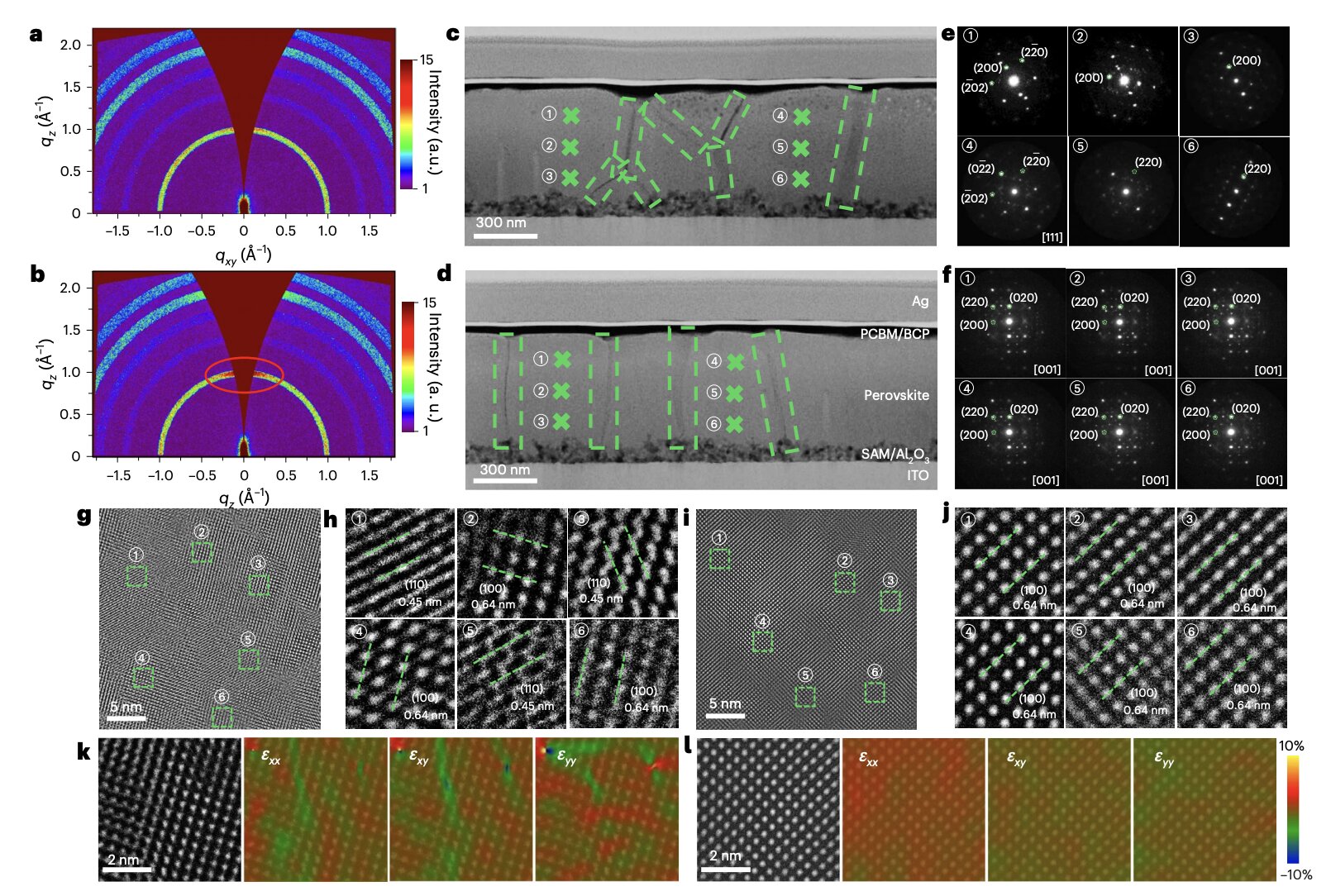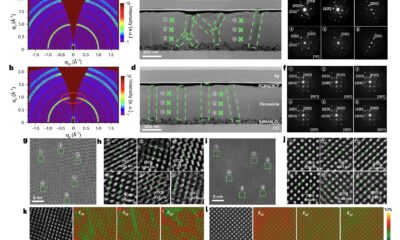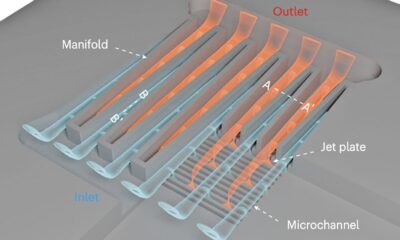Tech
The hidden military pressures behind the new push for small nuclear reactors

Donald Trump’s recent visit to the UK saw a so-called “landmark partnership” on nuclear energy. London and Washington announced plans to build 20 small modular reactors and also develop microreactor technology—despite the fact no such plants have yet been built commercially anywhere in the world.
The UK prime minister, Keir Starmer, promised these plans will deliver a “golden age” of nuclear energy that will also “drive down bills.” Yet the history of nuclear power has been decades of overhype, soaring costs and constant delays. Around the world, the trends point the wrong way.
So why the renewed excitement about going nuclear? The real reasons have less to do with energy security, or climate change—and far more to do with military power.
At first sight, the case may seem obvious. Nuclear supporters frame small modular reactors, or SMRs, as vital for cutting emissions, meeting rising demand for electricity from cars and data centers. With large nuclear plants now prohibitively expensive, smaller reactors are billed as an exciting new alternative.
But these days even the most optimistic industry analyses concede that nuclear—even SMRs—is unlikely to compete with renewables. One analysis in New Civil Engineer published earlier this year concluded that SMRs are “the most expensive source per kilowatt of electricity generated when compared with natural gas, traditional nuclear and renewables.”
Independent assessments—for instance by the formerly pro-nuclear Royal Society—find that 100% renewable systems outperform any energy system, including nuclear on cost, flexibility and security. This helps explain why worldwide statistical analysis shows nuclear power is not generally linked to carbon emissions reductions, while renewables are.
Partly, the enthusiasm for SMRs can be explained by the loudest institutional voices tending to have formal pro-nuclear remits or interests: they include the industry itself and its suppliers, nuclear agencies, and governments with entrenched military nuclear programs. For these interests, the only question is which kinds of nuclear reactors to develop, and how fast. They don’t wonder if we should build reactors in the first place: the need is seen as self-evident.
At least big nuclear reactors have benefited from economies of scale and decades of technological optimization. Many SMR designs are just “powerpoint reactors,” existing only in slides and feasibility studies. Claims these unbuilt designs “will cost less” are speculative at best.
Investment markets know this. While financiers see SMR hype as a way to profit from billions in government subsidies, their own analyses are less enthusiastic about the technology itself.
So why then, all this attention to nuclear in general and smaller reactors in particular? There is clearly more to this than meets the eye.
The hidden link
The neglected factor is the military dependence on civil nuclear industries. Maintaining a nuclear-armed navy or weapons program requires constant access to generic reactor technologies, skilled workers and special materials. Without a civilian nuclear industry, military nuclear capabilities are significantly more challenging and costly to sustain.
Nuclear submarines are especially important here as they would very likely require national reactor industries and their supply chains even if there was no civil nuclear power. Barely affordable even vessel by vessel, nuclear submarines become even more expensive when the costs of this “submarine industrial base” is factored in.
Rolls-Royce is an important link here, as it already builds the UK’s submarine reactors and is set to build the newly announced civil SMRs. The company said openly in 2017 that a civil SMR program would “relieve the Ministry of Defense of the burden of developing and retaining skills and capability.”
Here, as emphasized by Nuclear Intelligence Weekly in 2020, the Rolls-Royce SMR program has an important “symbiosis with UK military needs.” It is this dependency that allows military costs (in the words of a former executive with submarine builders BAE Systems), to be “masked” behind civilian programs.
By funding civil nuclear projects, taxpayers and consumers cover military uses of nuclear power in subsidies and higher bills—without the added spending appearing in defense budgets.
When the UK government funded us to investigate the value of this transfer, we put it at around £5 billion per year in the UK alone. These costs are masked from public view, covered by revenues from higher electricity prices and the budgets of supposedly civilian government agencies.
This is not a conspiracy but a kind of political gravitational field. Once governments see nuclear weapons as a marker of global status, the funding and political support becomes self-perpetuating.
The result is a strange sort of circularity: nuclear power is justified by energy security and cost arguments that don’t stand up, but is in reality sustained for strategic reasons that remain unacknowledged.
A global pattern
The UK is not unique, though other nuclear powers are much more candid. US energy secretary Chris Wright described the US-UK nuclear deal as important for “securing nuclear supply chains across the Atlantic.” Around US$25 billion a year (£18.7 billion) flows from civil to military nuclear activity in the US.
Russia and China are both quite open about their own inseparable civil-military links. French president Emmanuel Macron put it clearly: “Without civilian nuclear, no military nuclear, without military nuclear, no civilian nuclear.”
Across these states, military nuclear capabilities are seen as a way to stay at the world’s “top table”. An end to their civilian program would threaten not just jobs and energy, but their great power status.
The next frontier
Beyond submarines, the development of “microreactors” is opening up new military uses for nuclear power. Microreactors are even smaller and more experimental than SMRs. Though they can make profits by milking military procurement budgets, they make no sense from a commercial energy standpoint.
However, microreactors are seen as essential in US plans for battlefield power, space infrastructure and new “high energy” anti-drone and missile weaponry. Prepare to see them become ever more prominent in “civil” debates—precisely because they serve military goals.
Whatever view is taken of these military developments, it makes no sense to pretend they are unrelated to the civil nuclear sector. The real drivers of the recent US–UK nuclear agreement lie in military projection of force, not civilian power production. Yet this remains absent from most discussions of energy policy.
It is a crucial matter of democracy that there be honesty about what is really going on.
This article is republished from The Conversation under a Creative Commons license. Read the original article.![]()
Citation:
The hidden military pressures behind the new push for small nuclear reactors (2025, October 27)
retrieved 27 October 2025
from https://techxplore.com/news/2025-10-hidden-military-pressures-small-nuclear.html
This document is subject to copyright. Apart from any fair dealing for the purpose of private study or research, no
part may be reproduced without the written permission. The content is provided for information purposes only.
Tech
Molecular engineering strategy boosts efficiency of inverted perovskite solar cells

Solar cells, devices that can directly convert radiation emitted from the sun into electricity, have become increasingly widespread and are contributing to the reduction of greenhouse gas emissions worldwide. While existing silicon-based solar cells have attained good performances, energy engineers have been exploring alternative designs that could be more efficient and affordable.
Perovskites, a class of materials with a characteristic crystal structure, have proved to be particularly promising for the development of low-cost and energy-efficient solar energy solutions. Recent studies specifically highlighted the potential of inverted perovskite solar cells, devices in which the extraction charge layers are arranged in the reverse order compared to traditional designs.
Inverted perovskite solar cells could be more stable and easier to manufacture on a large-scale than conventional perovskite-based cells. Nonetheless, most inverted cells developed so far were found to exhibit low energy-efficiencies, due to the uncontrolled formation of crystal grains that can produce defects and adversely impact the transport of charge carriers generated by sunlight.
Researchers at Huazhong University of Science and Technology recently devised a new molecular engineering strategy to control the crystallization of perovskite materials in inverted solar cells. This promising approach, outlined in a paper published in Nature Energy, entails mixing special naphthalene-based molecules into perovskites, to ensure that they grow more uniformly.
“Formamidinium and cesium metal halide perovskites enable high efficiency in inverted perovskite solar cells, but uncontrolled crystallization limits their performance,” wrote Qisen Zhou, Guoyu Huang and their colleagues in their paper. “We regulate the nucleation and growth of the perovskite through aromatic interactions between naphthalene ammonium salts and naphthalenesulfonates.”
Essentially, the researchers mixed naphthalene-based molecules into the perovskite solution to control the formation and growth of perovskite crystals. They found that the resulting perovskite films were uniform and had very few defects, which is highly favorable for the development of inverted solar cells.
“The ammonium groups of the naphthalene ammonium salts occupy the formamidinium site, while the sulfonate groups of the naphthalenesulfonates coordinate with lead ions,” explained the authors. “Their naphthalene moieties form tight aromatic stacking adjacent to the [PbI6]4− octahedra. These interactions promote ordered out-of-plane crystallization along the (100) plane, enhancing defect passivation and carrier transport.”
Zhou, Huang and his colleagues used the uniform perovskite films they created to fabricate inverted perovskite solar cells. They then tested the performance, efficiency and stability of these cells under continuous illumination.
“We achieve a power conversion efficiency of 27.02% (certified 26.88%) for inverted solar cells,” wrote the researchers. “Encapsulated devices retain 98.2% of their initial efficiency after 2,000 h of maximum power point tracking under continuous illumination in ambient air. Furthermore, we demonstrate a certified steady-state efficiency of 23.18% for inverted mini-modules with an aperture area of 11.09 cm2 and a certified efficiency of 29.07% for all-perovskite tandem solar cells.”
The initial results gathered by this research team are highly promising, highlighting the promise of their molecular engineering approach for the development of energy-efficient inverted perovskite solar cells. In the future, their strategy could be further refined to achieve additional efficiency gains and used to realize high-quality perovskite films with varying compositions.
Written for you by our author Ingrid Fadelli, edited by Lisa Lock, and fact-checked and reviewed by Robert Egan—this article is the result of careful human work. We rely on readers like you to keep independent science journalism alive.
If this reporting matters to you,
please consider a donation (especially monthly).
You’ll get an ad-free account as a thank-you.
More information:
Qisen Zhou et al, Aromatic interaction-driven out-of-plane orientation for inverted perovskite solar cells with improved efficiency, Nature Energy (2025). DOI: 10.1038/s41560-025-01882-x
© 2025 Science X Network
Citation:
Molecular engineering strategy boosts efficiency of inverted perovskite solar cells (2025, October 28)
retrieved 28 October 2025
from https://techxplore.com/news/2025-10-molecular-strategy-boosts-efficiency-inverted.html
This document is subject to copyright. Apart from any fair dealing for the purpose of private study or research, no
part may be reproduced without the written permission. The content is provided for information purposes only.
Tech
The Republican Plan to Reform the Census Could Put Everyone’s Privacy at Risk

President Donald Trump and the Republican Party have spent the better part of the president’s second term radically reshaping the federal government. But in recent weeks, the GOP has set its sights on taking another run at an old target: the US census.
Since the first Trump administration, the right has sought to add a question to the census that captures a respondent’s immigration status and to exclude noncitizens from the tallies that determine how seats in Congress are distributed. In 2019, the Supreme Court struck down an attempt by the first Trump administration to add a citizenship question to the census.
But now, a little-known algorithmic process called “differential privacy,” created to keep census data from being used to identify individual respondents, has become the right’s latest focus. WIRED spoke to six experts about the GOP’s ongoing effort to falsely allege that a system created to protect people’s privacy has made the data from the 2020 census inaccurate.
If successful, the campaign to get rid of differential privacy could not only radically change the kind of data made available, but could put the data of every person living in the US at risk. The campaign could also discourage immigrants from participating in the census entirely.
The Census Bureau regularly publishes anonymized data so that policymakers and researchers can use it. That data is also sensitive: Conducted every 10 years, the census counts every person living in the United States, citizen and noncitizen alike. The data includes detailed information like the race, sex, and age, as well the languages they speak, their home address, economic status, and the number of people living in a house. This data is used for allocating the federal funds that support public services like schools and hospitals, as well as for how a state’s population is divided up and represented in Congress. The more people in a state, the more Congressional representation—and more votes in the Electoral College.
As computers got increasingly sophisticated and data more abundant and accessible, census employees and researchers realized the data published by the Census Bureau could be reverse engineered to identify individual people. According to Title XIII of the US Code, it is illegal for census workers to publish any data that would identify individual people, their homes, or businesses. A a government employee revealing this kind of information could be punished with thousands of dollars in fines or even a possible prison sentence.
For individuals, this could mean, for instance, someone could use census data without differential privacy to identify transgender youth, according to research from the University of Washington.
Tech
This Is the Nuclear-Powered Ship Deployed in Trump’s War on Drug Boats

The USS Gerald R. Ford, the US Navy’s most advanced aircraft carrier, is heading to the Caribbean Sea as part of a Pentagon strategy it says is meant to strengthen the fight against drug trafficking in South America.
The news was confirmed late last week by Sean Parnell, assistant secretary of defense for public affairs, through his social networks. In his message, he explained that the deployment of the Gerald R. Ford “will strengthen the United States’ ability to detect, monitor and dismantle illicit actors and activities that compromise the security and prosperity of US territory, as well as our stability in the Western Hemisphere.” Until now, only combat vessels and aircraft had been mobilized in the area.
Since last month, President Donald Trump’s administration has maintained a campaign in Caribbean waters aimed at combating drug trafficking, arguing that the activity of various criminal organizations puts the security of the American people at risk. In recent weeks, the US armed forces have targeted several vessels and accused their operators of transporting drugs, a situation that has increased US diplomatic tensions with nations such as Venezuela and Colombia.
The dispatch of the Ford represents an escalation of Washington’s military activity in the region, which, according to specialists, could further increase hostilities.
The Ford has been described as the most advanced and expensive in the world. Its construction had an estimated value of $13 billion, according to military industry press. It is the first of a new generation of aircraft carriers destined to replace the Nimitz class, which since the 1970s has been the mainstay of the US fleet.
The site Naval Technology explains that the Ford class comprises nuclear-powered aircraft carriers, developed by the Newport News Shipbuilding division of Huntington Ingalls Industries for the US Navy as part of the CVN-21 Aircraft Carrier Program.
Bring in the Big Guns
Compared to the Nimitz class, the USS Gerald R. Ford incorporates 23 new or improved systems that optimize transportation, communication, tracking, operational performance, weight tolerance and stability functions, among other aspects.
The ship displaces nearly 100,000 tons, is 333 meters long and 40.8 meters wide, and has a flight deck 78 meters wide. One of its main innovations is its advanced nuclear propulsion system, which improves power generation and distribution by 150 percent over its predecessors. This system, developed by Northrop Grumman, is composed of two reactors, four shafts, and a zonal electrical distribution system, allowing it to sail for up to 20 years without refueling.
The ship operates with the Electromagnetic Aircraft Launch System, considered its greatest innovation. This mechanism replaces the traditional steam catapults with a linear electromagnetic accelerator motor, which improves control in the acceleration of manned and unmanned aircraft. In practice, it allows vehicles to be launched at higher speeds, with heavier weaponry or more fuel, extending their range, coverage, and lethality.
-

 Tech1 week ago
Tech1 week agoHow to Protect Yourself Against Getting Locked Out of Your Cloud Accounts
-

 Tech7 days ago
Tech7 days agoThis Smart Warming Mug Is Marked Down by $60
-

 Fashion1 week ago
Fashion1 week agoChinese woman charged over gold theft at Paris Natural History Museum
-

 Fashion1 week ago
Fashion1 week agoeBay UK seller fee removal sends revenue down but profits rise
-

 Entertainment7 days ago
Entertainment7 days agoJohn Grisham unveils his first-ever mystery, “The Widow”
-

 Sports1 week ago
Sports1 week agoIs Mount the answer to what Amorim’s trying to do at Man United?
-

 Tech1 week ago
Tech1 week agoEaster Island’s Moai Statues May Have Walked to Where They Now Stand
-

 Tech1 week ago
Tech1 week agoOpenAI has slipped shopping into ChatGPT users’ chats—here’s why that matters


















